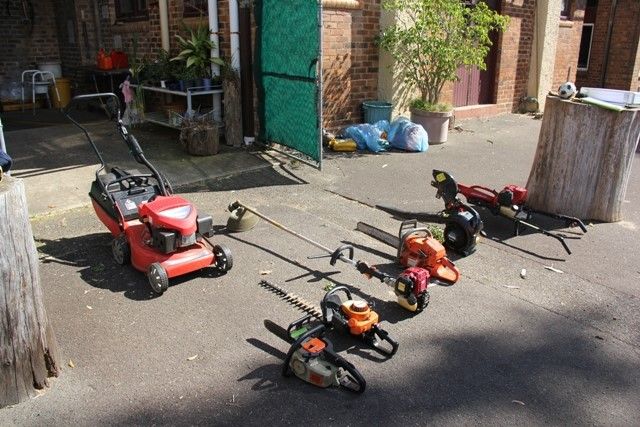Safe Environments were engaged to undertake a noise assessment for Ground Maintenance Crew of a hospital and aged care facility in the south of Sydney. In this noise assessment there were a number of equipment and machinery used to maintain the lawns and conduct landscaping services. The plant and equipment included:
- Tractor / slasher (885 David Brown)
- Ride on lawnmower (Walker MCGHS 20HP)
- Edger (Atom 4-stroke)
- Whipper snipper (Kaaz – Honda 4-stroke)
- Lawn mower (Rover 4-stroke I5500)
- Leaf blower (Makita BHX 2500)
- Chainsaw (Stihl 010AV)
- Chainsaw (Husquvana)
- Hedge trimmer (Tanak THT-210)
The machinery is operated at different times depending on the time of year and tasks which require being undertaken; as such an overall LAeq cannot be effectively calculated unless quite a number of measurements were undertaken using dosimeter as part of a detailed noise assessment; however emphasis should be placed on control and rotation of tasks throughout a week.
A previous noise assessment had been undertaken by a previous workplace health and safety consultant based in Sydney. Through discussions with the staff it was understood that the previous noise consultant had not conducted the noise assessment with the equipment running in the normal operational mode.
The noise assessment undertaken by Safe Environments was conducted with the lawnmowers, chainsaws, whipper snippers, hedge trimmers, edgers and tractors whilst workers were doing normal tasks. This will normal give a higher noise level through cutting and revving the petrol motors. This is all important in understanding the actual noise that workers will be exposed to.
Workers who undertake lawn mowing, edging and general grounds maintenance will be subjected to Whole Body Vibration (WBV) and Hand Arm Vibration (HAV). Whole Body Vibration can increase the risk of muscular-skeletal injuries, especially the back. Hand Arm Vibration can cause circulation issues with hands particularly in cold environments and also increases the risk of noise induced hearing loss.
Buy Quiet
Before buying machinery and equipment for garden and lawn maintenance, review the noise and vibration levels which should be provided as part of the manufacturer specifications. Remember that a difference of 3 dB might not appear to be much, but is actually double the noise exposure!
Personal Hearing Protection
Buying the right hearing protection is important to ensure that you are protecting yours hearing, but that you also can hear the environment around you and be aware of hazards such as approaching traffic or forklifts and the like.
In this instance, the ground maintenance crew currently ear either in-ear, over ear or custom fitted in-ear hearing protection.
Training and Instruction
Not many people are aware that hearing aids cannot improve the quality of hearing to a significant degree. Once hearing loss starts from noise exposure, it cannot be regained. This is where training is important to ensure that the grounds maintenance staff are aware of why they need to wear hearing protection and how to insert ear plugs correctly.
In general for grounds maintenance staff, they are likely to be significantly noise exposed. In this case study, based on the results whereby there are several measurements between 85 and 106 dB(A) there was a Medium to High Risk principally due to inadequate instruction, training and documentation.
Vibration of the machinery is significant and it is recommended that vibration analysis be undertaken to assess the risk to health. Regular maintenance of the machinery will assist to reduce both noise levels and vibration.
It is recommended that auditory assessment to AS/NZS 1269.4 Occupational Noise Management Part 4: Auditory assessment, be conducted prior to commencement of a position and at least once every two years.
If you require assistance with noise testing, assessment or audiometric testing, please call one of the occupational hygienists at Safe Environments.
Author: Carl Strautins

Email: Carl@SafeEnvironments.com.au
Carl Strautins is a managing director of Safe Environments Pty Ltd a multi-specialist consultancy operating in the building, construction and property management industries. He provides the necessary guidance and risk minimisation strategies required by architects, construction companies and facility managers to ensure they mitigated their risk to property risk. He is engaged on a regular basis to provide expert opinion for disputes and legal proceedings. Click here to know more about him.


